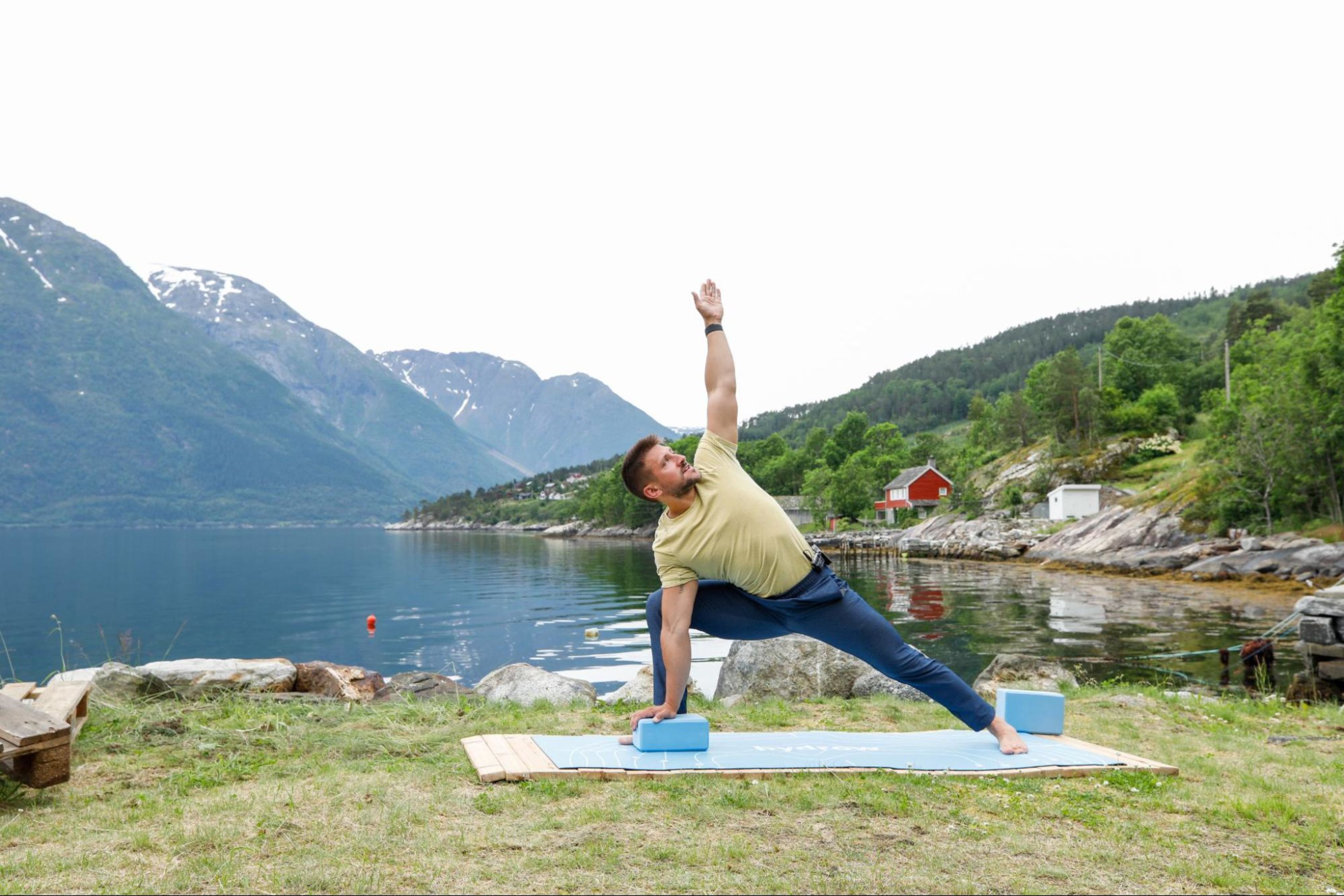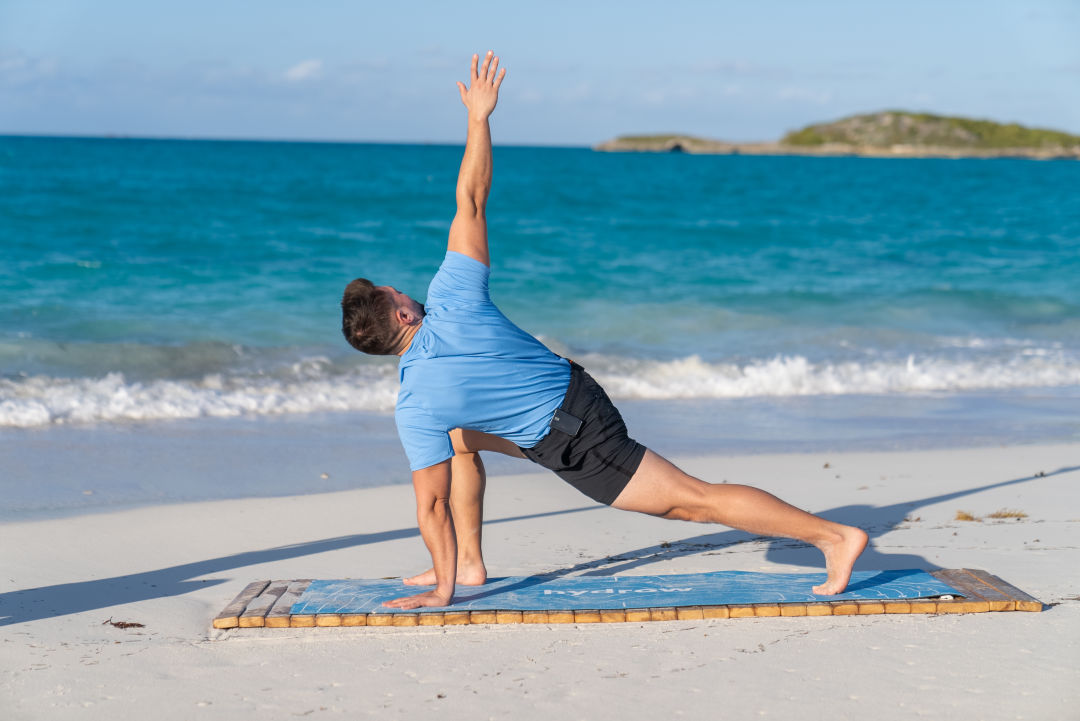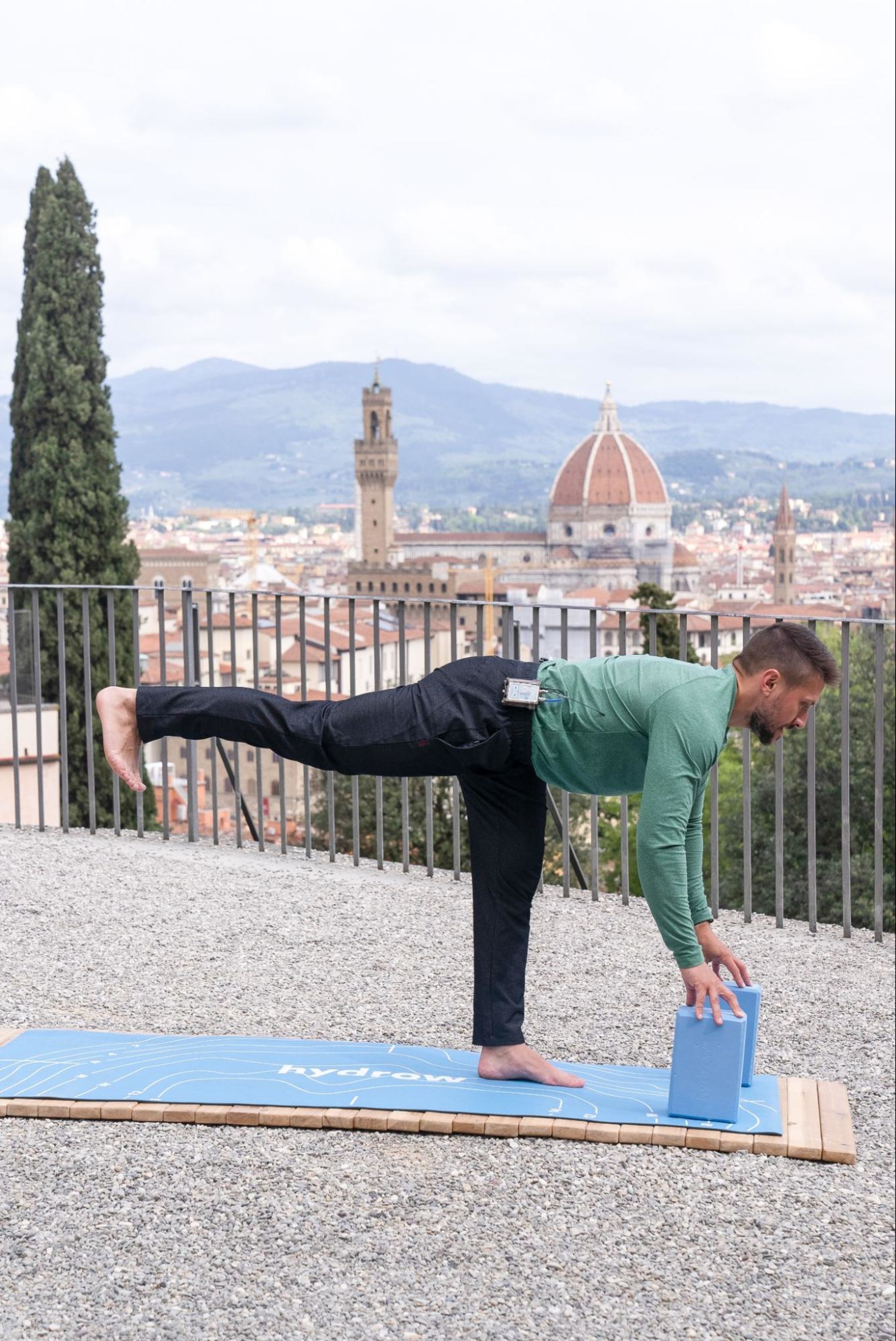How to Use Yoga Blocks: Key Benefits and 15 Amazing Yoga Block Poses to Try

Yoga blocks are now perhaps the most common prop one can find in a yoga studio or gym, but believe it or not, they are a relatively recent addition to the yoga practice. One of the foundational teachers responsible for bringing yoga to the West was BKS Iyengar, who noticed that some of his students were unable to perform certain poses due to factors like injury, age, or bodily differences. He introduced wooden yoga blocks, along with other props like straps and blankets, as a way to help students express and benefit from the wide variety of yoga poses available. This was a departure from traditional yoga in India, which emphasized stricter adherence to a path built on self-reliance, austerity, and discipline.
The advent of yoga blocks represents not only a practical tool that yogis can use to deepen their practice, but the start of a greater global democratization of yoga. The modern form of yoga is more accessible and equitable, based on the belief that students should fit the practice to meet their needs, not the other way around.
Want to learn more about yoga blocks? In this article, we will talk about some of the key benefits of using yoga blocks, and explore 15 poses that put the humble yoga block to good use.
What are yoga blocks?
Yoga blocks generally come in the same rectangular shape, allowing for three distinct settings or distances. For example, a yoga block at its widest width and lowest height can serve as a great shelf for your sitting bones in a seated pose. Additionally, two yoga blocks at their highest height can work to support your hands under the shoulders in a supported Warrior Three pose.
While it’s most common to find yoga blocks made of a lightweight foam or rubber material, you can also find denser blocks made out of cork or even wood. There are pros and cons to any material; the lighter-weight blocks are easier to list or squeeze (like between your hands in a lunge, or your thighs in a backbend), but may be more difficult to balance on (like in a tree pose). Heavier blocks are sturdier, but you’ll wish you had a foam block when your teacher makes you hold it overhead.
What are the benefits of yoga blocks?
Using a yoga block offers many benefits, including:
1. Improved alignment
Yoga blocks can help to bridge a gap—like between your hand and the floor in a half moon pose—placing your spine in a straighter alignment and allowing for greater expression of the pose.
2. Greater accessibility
If you’re just learning a new pose, using yoga blocks can be a great step for letting you feel some of the key actions of the pose before you’re able to do it without the support of the block.
3. Enhanced flexibility
Having the support of blocks can allow you to safely and gradually deepen your stretches. For example, using yoga blocks under your hands or legs in a full split pose is an excellent way to learn how to relax the muscles that need to relax to enter the full pose.
4. Encourages proper engagement
Some yoga teachers will instruct you to squeeze a block in certain poses to feel what it’s like to engage specific muscles. For example, you can squeeze a block between your hands in a lunge to feel your triceps firming in, a crucial action in downward dog and dolphin pose.
5. Restorative postures
There is an entire branch of yoga called restorative yoga that utilizes props like yoga blocks to support your body in shapes that facilitate a deep relaxation. For example, in the supported fish pose, you’d use two blocks to support a glorious opening in the upper back.
Related blog: 20 Poses for Yoga Beginners and Their Benefits
15 of the best yoga block poses to try
To experience some of the different ways yoga blocks can enhance your yoga practice, try some of these poses:
The best yoga block poses for support during balance
1. Half moon pose with yoga blocks
Place a block under your lower hand, but try not to place too much weight on it. Instead, use a light touch and focus on the action of the bottom hand helping the upper body to turn open. This has the additional benefit of aligning your head with your hips, making it easier to find length in the spine and twist open.
2. Tree pose with yoga blocks
This is a fun one that should be performed carefully. Stand on a block at the lowest, longest setting and let your other leg dangle at the same height. Feel what it’s like to disengage the outer hip of the standing leg, letting the lifted foot fall just below the block level.
Then do the opposite, and maintain that engagement of the outer hip as you place the lifted leg into tree pose. Performing this one time changed my tree pose forever!
3. Crow pose with yoga blocks
Placing your feet on blocks can give you a head start toward tipping forward into the arm balance of crow pose. For many people, it’s this initial step of lifting and moving forward that feels impossible on the journey to crow. Bonus points if you place a pillow or blanket just in front of you, which can help ease any anxiety around falling face-first.

Explore Hydrow’s library of yoga workouts from around the world.
The best yoga block poses for deepening flexibility
1. Pigeon pose with yoga blocks
I encourage the use of a yoga block in pigeon pose in cases where your hips are massively skewed, or if it feels too intense to settle your hips anywhere near the floor. Placing a block under the lifted hip can allow for an even settling of the weight between both hips, which can help your body relax into a better shape.
2. Half split or full split with yoga blocks
There are two ways that blocks can be useful in split poses:
Under the hands in a half split to discourage excessive rounding in the spine.
Under the hands in a full split to take some weight out of the legs and ease into the stretch.
Blocks are also useful in a full split when placed under the legs as another way to modulate the pressure within the stretch.
3. Reclined hero pose with yoga blocks
Placing blocks under your upper back is a great way to safely explore such a deep quad stretch. Go slowly and adjust the setting of the blocks to deepen or back out of the stretch. Pay attention to where your flexibility is most limited, as this pose challenges the quads, knees, and ankles.
The best yoga block poses for alignment support
1. Revolved triangle with yoga blocks
Taking a block under your bottom hand may be just the support you need to lengthen the spine and more effectively twist in this challenging shape.
2. Revolved half moon with yoga blocks
This is one of the toughest poses in all of yoga because of all the competing demands within it. A block under your bottom hand can help not just with the balance, but with better alignment of the shoulders and hips, giving you more ability to lengthen the spine and twist around that length.
3. Supported warrior III with yoga blocks
Blocks under the hands in a warrior III allow you the opportunity to check on what your legs and hips are doing. This is certainly a tough pose to execute, and blocks are a great way to support yourself as you learn the proper alignment and actions needed to hold it correctly.
The best yoga block poses for better engagement
1. Camel pose with yoga blocks
There are a couple ways you could use blocks in a camel pose. A block placed the narrow way between your thighs is a great tool for engaging your legs during the backbend. A block placed at your sternum can give you feedback about where and whether you are directing your chest to lift.
Last, a block at the lowest height under your toes can make it more accessible to reach back and grab your heels, while maintaining that press of the top of the feet that you lose when you tuck your toes.
2. Forearm stand with yoga blocks
It is so helpful to place a block at its widest width between your hands when learning forearm stand. That action of hugging into the block teaches you how to hug your outer arms in when you eventually lift up into forearm stand.
Something I see happen a lot with students just starting yoga is that when they attempt this pose, they flare the elbows out, which collapses the shoulders, removes the integrity from the base of the pose, and ultimately dooms it.
3. Tadasana with yoga blocks
A block placed the narrow way between your thighs can help remind you to use the legs in your Tadasana pose. Within a well-executed Tadasana are the elements of inner thighs rotating back, quads lifting up, and glutes firming in. The feedback from a block can help to teach these actions. This is one of the most valuable lessons you can learn, since we see these same exact actions in every pose where the upper body is in that Tadasana shape (think plank, side plank, and headstand).
The best yoga block poses for deeper relaxation
1. Supported bridge with yoga blocks
Come into bridge pose and place a block under your sacrum, the bony part of your lower back, at a height setting that feels comfortable. Supported backbends like this are a great way to relax at the end of your yoga session and ease your body into more challenging backbends while maintaining a calm breath and demeanor.
2. Supported shoulder stand with yoga blocks
This pose is basically just supported bridge pose with your legs lifted into the air. Inversions are a key part of the yoga practice and offer many benefits for circulation and mood. This supported inversion can provide many of the same benefits as more active inversions in a way that’s relaxing and accessible.
3. Supported fish with yoga blocks
I’ve saved my favorite for last! Supported fish is a supported upper backbend where you lie with one block under the base of your shoulder blades and a second block supporting the back of your skull. There are a few variations that involve just one block or include other props like a bolster.
The setup for this will be highly individualized, but we are looking for a place that feels like a gentle uplift in the chest and upper back. I love this shape because it feels like the precise counter to the rounding in the chest and shoulders that we all experience when stressed.
Experience all the amazing benefits of yoga blocks today!
The ways in which you use yoga blocks will be as individual as your yoga practice. Get to know where you need support, play around with different settings and positions, and don’t feel like any pose is “better” or “worse” just because you choose to use blocks. Yoga blocks are simply another tool we can use to better understand ourselves and the yoga practice.
Whether you’re new to yoga or want to deepen your practice, Hydrow’s yoga library offers guided workouts designed to help you build strength, improve mobility, and bring calm to your day.
Explore Hydrow’s yoga workouts today.

Explore Hydrow’s library of 5,000+ rowing, circuit training, yoga, Pilates, and mobility workouts.






